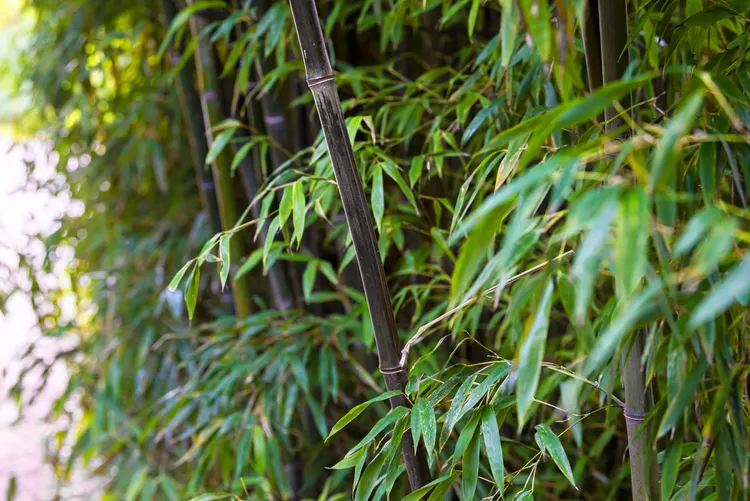
Phyllostachys nigra, commonly referred to as black bamboo, is famous for its ebony-colored stalks, or culms. It is a running bamboo, which means it spreads and grows rapidly through underground rhizomes. This can cause black bamboo to be very invasive if not controlled.
But its quick expansion is not all terrible. Black bamboo is ideal for making solid walls, organic privacy fences, and soundproofing. Black bamboo culms start out green and change to their well-known black colouring in the second or third year of growth. These culms have tall, lance-shaped, vivid green leaves that stand out sharply against the black background.
Light
Regarding lighting, black bamboo is not particularly finicky. It can be cultivated anywhere, in full sun to some shade.

Soil
Nutrient-rich soil is ideal for black bamboo. For optimum growth, moist, loamy, well-draining varieties are best. Black bamboo does well in sand, clay, and silt mixtures, but it may grow in a variety of soil types as long as it drains effectively.
Consider spreading a layer of mulch around your bamboo to help maintain the soil in your garden in a healthy balance of moist and well-draining.
Water
Black bamboo thrives in water and will profit most from regular irrigation. Try to avoid letting your soil become damp.
You should water bamboo plants in containers more frequently. You might need to water these plants as frequently as once every other day, depending on the humidity and temperature in your region.
Fertilizer
You might decide to fertilize black bamboo to give it a burst of extra nutrients to encourage healthy growth. For optimal results, use a nitrogen-rich fertilizers; grasses normally respond well to this kind of fertilizers. Late in the spring and again in the midst of the growing season, apply fertilizers.
Table





